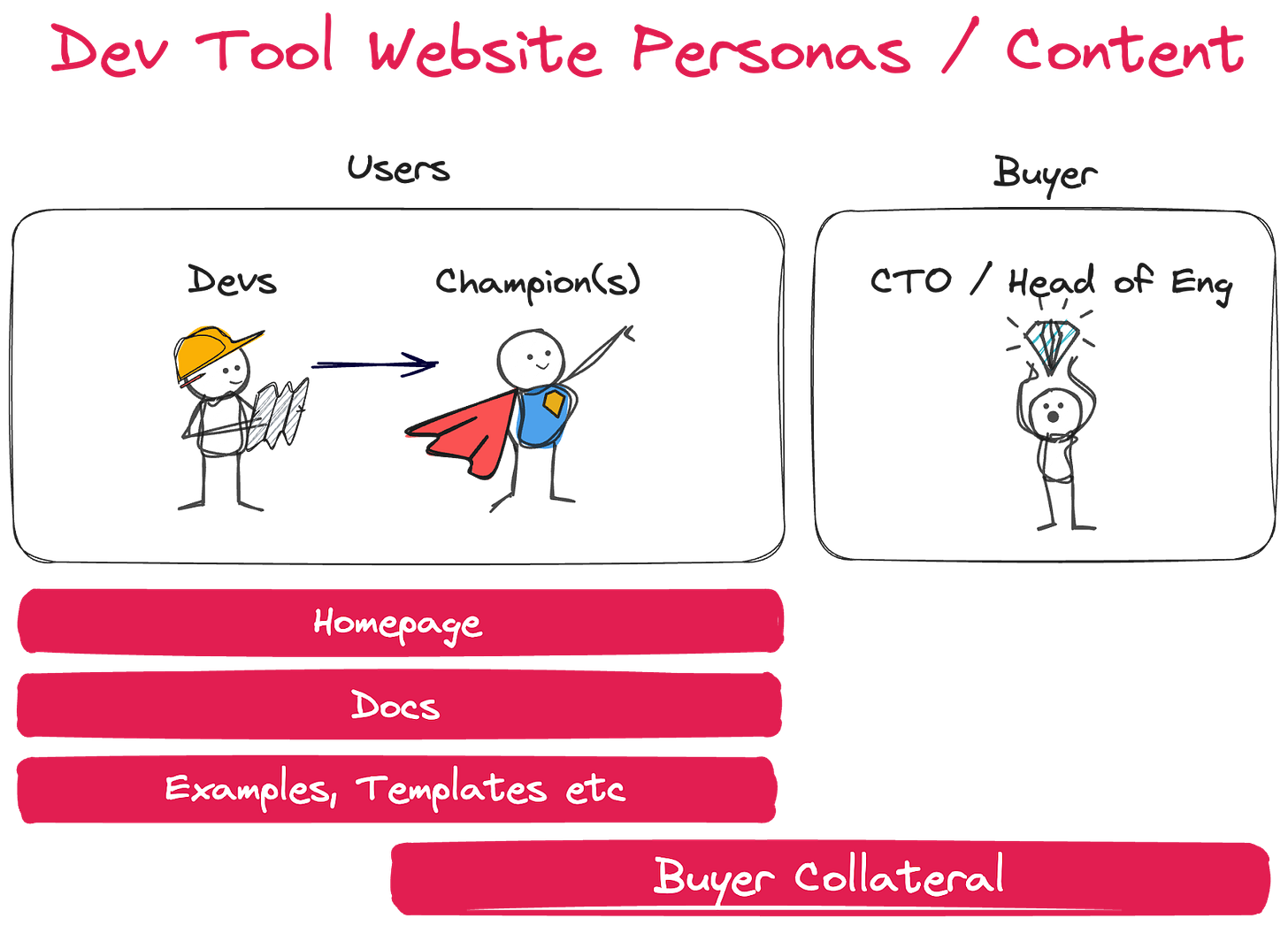DevTools Brew #58: Mintlify Story: From Pivots to First Customers, The Ultimate Guide to Building Developer Tool Websites...
Hey folks, welcome to DevTools Brew Newsletter #58!
If you're new here, my name is Morgan Perry, co-founder of Qovery.
Every Saturday, I share the stories, strategies, and insights behind the most successful devtool companies. Subscribe to receive weekly stories :)
Also, follow me on Linkedin if you don’t already!
In this Issue #58:
📈 Mintlify Story: From Pivots to First Customers
📕 The Ultimate Guide to Building Developer Tool Websites
💸 Top Funding Rounds in Devtools
⭐ Star History Weekly Pick
Let's dive in!
📈 Mintlify Story: From Pivots to First Customers
Typically, I used to share insights from established devtool companies like Datadog, Hashicorp, Harness, Snyk, Retool, Sentry, Docker, or LaunchDarkly— that have scaled beyond the early stages to achieve high growth and significant market impact. Today, however, I wanted to highlight the journey of Seed-stage startup, Mintlify, which aids developers by automating documentation creation directly within their coding workflow. Let’s unpack the early journey of Mintlify from Y Combinator to pivots to their first customers—a story of resilience, rapid pivoting, and meticulous customer acquisition 👇
Mintlify’s Journey Through Y Combinator
Initial Challenges and Pivots
Rapid Product Development: Initially named Figstack, Mintlify started as a tool translating code blocks into plain English, quickly gaining traction on Product Hunt. However, they faced significant challenges with user retention.
YC Application and Pivot: Despite initially thinking they failed to secure a spot in Y Combinator, the co-founders received a last-minute invitation for an interview. With just four days to prepare and realizing their current model was unsustainable, they pivoted to a new product idea to present.
Success and Insight Discovery: During YC, another pivot led them to realize a strong user need for integrating code explanations directly into development environments, which was more engaging and retained users better.
From Pivots to Monetization
Product Evolution and Monetization: Post-YC, they developed Doc Writer, which automatically generated documentation from code. Despite initial user growth, monetization through a subscription model proved difficult as individual developers were reluctant to pay - as one of the founders described: “Selling to individual developers is hard. It's like selling a cake to a baker.”
Business Realization: Attempts to sell to businesses highlighted the necessity of a self-hosted solution due to security concerns, which was not feasible with their reliance on OpenAI's models.
Lessons and Strategic Shifts
Persistent Experimentation: After multiple pivots and continuous product testing, Mintlify identified a persistent pain point around documentation within the developer community
“Finally in September 2022, we took a shot at the simplest idea of them all: building the documentation platform itself”.
Market Fit and Growth: The final product version aligned closely with market demands, focusing on ease of integration and user workflow, leading to substantial adoption and recognition as a popular tool among YC companies.
Growing by Doing Things That Don’t Scale
Early Customer Acquisition
Hands-on Approach: Mintlify’s co-founders adopted a highly personal approach to gain their first users by manually setting up documentation for them, significantly enhancing customer experience and satisfaction.
First Customer Success: Their first customer, acquired through direct engagement and offering to set up documentation, demonstrated the potential of their product and led to positive word-of-mouth.
Scaling Up the Customer Base
Feedback-Driven Development: The initial non-scalable approach of manually setting up each new customer's documentation provided invaluable insights into customer needs, directly influencing product development and refinement.
Beyond Initial Success: To scale from 10 to 100 customers, Mintlify took a proactive stance by preemptively creating improved documentation for potential users before engaging them, which helped convert cold leads into active customers.
Transition to Scalable Processes: As the customer base grew, Mintlify developed automated tools and a self-service onboarding process, enabling them to scale while still incorporating user feedback into continuous product improvement.
Long-term Strategy: The journey from a hands-on, customized service to a more automated and scalable model exemplifies the YC adage of doing things that don't scale initially to understand and capture the market effectively.
Mintlify’s journey underscores several key lessons for founders and operators of early-stage devtools startups. Flexibility in product development, direct engagement with early customers, and the ability to pivot based on real user feedback are crucial. Embracing these key lessons can be pivotal in navigating the complex and often unpredictable path to finding product-market fit in such a devtool space.
—> To explore more, read the full story here and here - originally published on the Mintlify blog.
📕 The Ultimate Guide to Building Developer Tool Websites
You want to learn the pivotal aspects of creating effective dev tool websites? This is an essential read not only for those in the trenches of developer tools but for any PLG company aiming for success. Today, we’re breaking down "The Ultimate Guide to Building Developer Tool Websites," authored by Jakub Czakon and presented by Ben Williams. This guide is packed with actionable insights from the frontlines of developer-focused marketing, emphasizing a dev-first mindset for website design that genuinely engages and converts.
Key Takeaways:
1. Adopt a Developer-First Mindset and Culture
Understanding Your Audience: Developers, like skilled workers, have deep insights into their tools and are quickly turned off by non-genuine marketing. Authenticity in how your tool works and its benefits is crucial.
Developer Empowerment: Tools like Snyk thrive by embedding a developer-first philosophy deeply into their operations, ensuring that all company functions support developer success.
2. Focus Your Homepage on the Developer
Early User Journey Integration: Treat your homepage not just as a marketing front but as an integral part of the product experience, focused on encouraging adoption rather than making a sale.
Traffic and Evaluation Insights: Most visitors to dev tool sites are developers, not the CTOs or heads of engineering who make purchasing decisions. These developers prefer to evaluate tools themselves, usually leading to better adoption when they champion the products internally.
3. Make Documentation Prominent
Trust Through Transparency: Developers rely on documentation to understand a product deeply before committing to it, so it’s essential to make documentation easy to find and use.
Effective Navigation: Including documentation links prominently on the homepage or in a secondary call to action can significantly increase user engagement and confidence.
4. Use Social Proof from Real Developers
Beyond Logos: While many companies use customer logos as social proof, testimonials or feedback from actual developers who have used the tool can provide more authentic and relatable endorsements.
5. Install Command as a Call to Action
Immediate Engagement: Offering an install command right on the homepage serves as a powerful call to action that speaks directly in the developer’s language, making it clear and simple to start using the tool immediately.
6. Offer a Playground, Sandbox, or Product Tour
Value Before Commitment: Providing a sandbox or interactive product tour allows developers to understand the tool’s value without full integration, reducing the initial barrier to entry.
7. Create a Template/Code Sample Library
Accelerate Engagement: Templates and code samples not only help demonstrate the product’s capabilities but also enable developers to quickly see the results and potential of using the tool.
8. Add an Integrations Section with Code Snippets
Seamless Integration Showcase: Developers need to know how a new tool will fit into their existing tech stack. Showing code snippets of how integrations work can demystify the process and encourage adoption.
9. Value Before Paywall - Let Developers Test
Free Trials and Open Source Options: Allowing developers to test the tool at no cost lowers the hurdles to trial and adoption, aligning with the preference to try before buying.
10. Make It Playful
Engagement Through Enjoyment: A playful or humorous approach can make a website memorable and engaging, helping to form a positive first impression and ongoing user engagement.
By applying these principles, you can significantly enhance your product’s appeal and usability, making your tool indispensable to the developer’s workflow. These insights are not just applicable to dev tools but can be broadly adapted to any product led growth strategy across various industries. Remember, understanding and empowering your users is the first step towards creating products that truly resonate and succeed.
—> To explore more, read the full article here - originally published on The Product-Led Geek
💸 Top Funding Rounds in Devtools
Vercel raised $250M in Series E at a $3.25B valuation to accelerate AI and security innovation and deliver next-gen web experiences and applications.
Codesphere announced a €16.5M Series A to reduce infrastructure costs in DevOps.
Recall.ai announced a $10M Series A funding round to provide a single API for meeting bots on every platform like Zoom, Google Meet, Microsoft Teams, and more.
Harness announced $150M in debt financing, essentially a line of credit, after surpassing $100M in ARR.
Alkira has raised $100M for “network infrastructure as a service,” which lets users virtualize and orchestrate hybrid cloud assets to manage them as a whole.
RunPod, the launchpad that empowers developers to deploy custom full-stack AI applications, announced it raised $20M in Seed funding.
Wiz, the cyber startup, raised $1B on path to IPO.
Knit secured $1M in Seed Funding to enhance SaaS integration platform with Gen AI.
Aikido announced a $17M Series A for its ‘no BS’ security platform aimed at developers.
⭐ Star History Weekly Pick
The Star History Weekly Pick is:
OpenStatus: “The open-source synthetic & real user monitoring platform.”
⭐️ 4.4k stars reached
It’s already over! If you have any comments or feedback, you can reach out to me on LinkedIn or Twitter.
Thanks for reading,
Morgan






